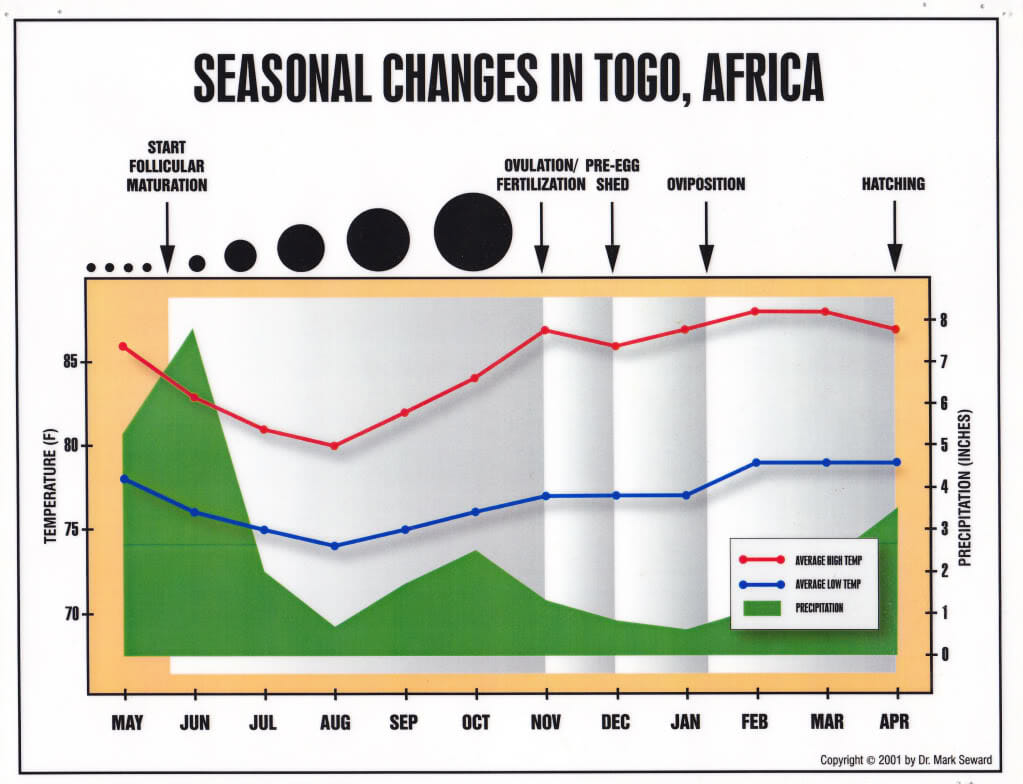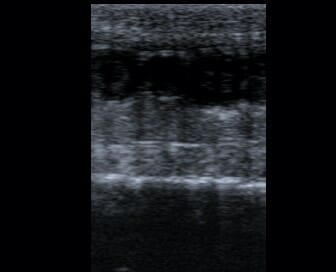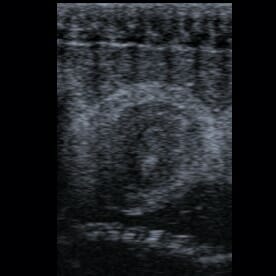Ball Pythons
Gearing up for Breeding Season
Tracking your female’s follicular development is key in order for a successful breeding to occur. But first, let’s back up a little and understand what happens during the year with a female Ball Python.
As you can see from this picture, Ball Pythons go through a yearly reproductive cycle when they reach breeding maturity. It is believed that in nature, a drop in temperature, which occurs in the second half of the year, triggers follicular growth. In captivity however, mimicking the temperature drop seems not to be necessary to trigger follicular development; and independently of the temperature, female ball pythons will at some point of the year start developing follicles.
Knowing when your female is developing follicles is not only important because it shows breeding maturity but also because it’s when you should start introducing males. The two most commonly used techniques to track follicular development are via palpating and via ultra-sounding.
Here at Breeder’s Circle we choose to use ultra-sounding. Simply due to the fact that I’m a big fan of objective data. I prefer seeing with my own eyes exactly how big each follicle is and every month track its growth. And to be honest, I was never able to master the palpation technique and before we acquired an ultrasound machine, I often caught myself doubting my results when palpating.
We usually ultra-sound our females once a month October through August and start introducing males when follicles are around 8-12mm and repeat the breeding 2 or 3 more times. So ideally, each female is bred at 8-12mm, 17-22mm, and 27-32mm. This technique has proven to be quite effective in guaranteeing fertilization and it’s definitely in part due to the ultrasound. This is just a brief overview of how we breed and it’s definitely not the only way. I know many breeders that have never touched an ultrasound machine and have no problems with breeding.
I find that the best way to successfully breed Ball Pythons is to do your homework, learn as much as you can, find a mentor, and apply your knowledge towards what work best for you. Either through Ultra-sounding, palpating, or guessing, you have to find what work best for you and your animals.
Attached are some sample pictures of follicles at different sizes:
- Follicle at 10mm
- Follicle at 20mm:
- Follicle at 30mm:
I hope you enjoyed the read and if you have any questions about breeding please feel free to contact me.
Thank you,
Breeder’s Circle
Ricardo Martins.





My females have follicles between 20 and 30 mm right now, and breeding season has commenced. Best of luck to you in the upcoming season.
Is the ultrasound already set up for ball pythons. Or is there a video to show how to set up the machine for snakes.